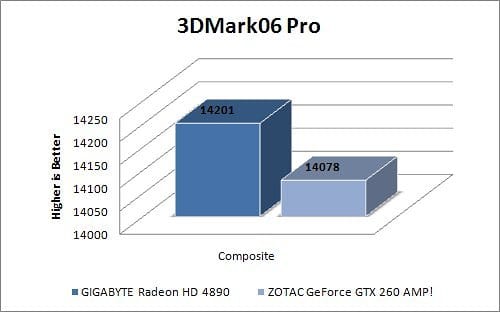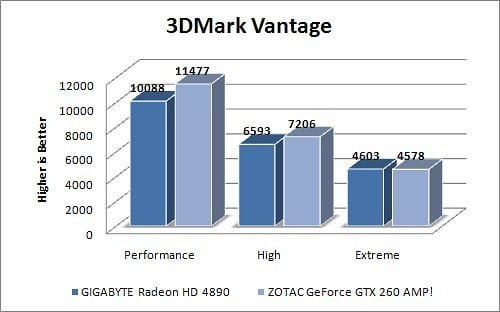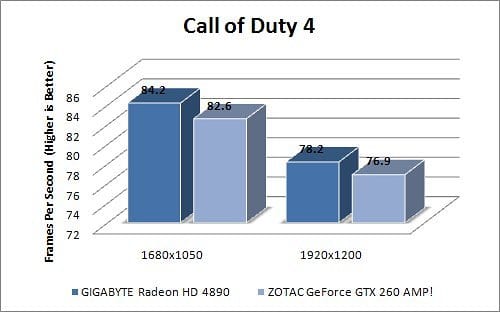The Test Rig
To test the GIGABYTE GV-R489-1GH-B Radeon HD 4890 video card, I installed it into my current test rig and used the latest drivers from ATI. We also pitted it against the ZOTAC GTX 260 AMP! we reviewed a while back. The reasoning behind this is that the GTX 260 chipset is essentially equivalent to the HD 4870. The HD 4890 is an overclocked HD 4870, and the AMP! Edition an overclock of the standard GTX 260. The match seems natural. Anyhow, here’s the test rig specs.
- AMD Phenom II X4 955 Black Edition CPU
- GIGABYTE GA-MA790FXT-UD5P AM3 790FX Motherboard
- Corsair XMS3 DHX 4GB DDR3-1600 Dual Channel Memory Kit
- ZOTAC GeForce GTX 260 AMP! Edition Video Card
- Western Digital VelociRaptor 300GB 10000rpm SATA2 Hard Drive
- HighSpeed PC Top Deck Tech Station
- Lian Li MAXIMA Force Extreme PS-A650GB 650W Power Supply
- Samsung SyncMaster 2493HM 24 Inch LCD Monitor
As for actual benchmarks we pretty well focused on gaming, trying to pick the most punishing titles in a particular genre. We brought back 3DMark06 for this review, since there are still some very popular DirectX 9 based titles hanging around. After all the testing is done, we then turn to overclocking to get and idea of how easy this card is to overclock. Let’s go.
Synthetic Benchmarks

It’s always interesting dragging 3DMark 06 out of digital mothballs to see how high a number you can get. Many have posted ridiculous scores in the 25,000 range using various tweaks and turning down the settings for the test. That’s not our goal here. Though we did use mostly default settings, we at least cranked the resolution up to 1920×1200 to match the native resolution of our test rig LCD panel. This produced some interesting results, with scores posted in the 14,000 range. The NVIDIA card we are using for comparison did edge out the GIGABYTE HD 4890, but the margin is less then 1% which makes it a non-issue. You could effectively call this a tie.

While the synthetic DX9 tests essentially ended in a mulligan that’ll require us to dive into some real world tests right away, the DirectX 10 based tests found in 3DMark Vantage produce some more interesting results. Unlike 3DMark06, Vantage has three performance presets to test with. The Extreme test runs at the native resolution of 1920×1200, with the High tests running at 1680×1050 and the Performance tests running at 1280×1024. Both the Performance and High tests put forward some large performance gaps between the NVIDIA hardware and our GIGABYTE review unit, with a gain of 13% and 9% respectively for the GTX 260 AMP!. Extreme mode is where things evened out, showing that the GIGABYTE HD 4890 can hold it’s own better at higher resolutions.
DirectX 9 Testing

The first test in our round of DX9 benchmarks is Call of Duty 4. Though it’s been superseded by Call of Duty: World at War, the newest game uses the same engine and CoD4 still has a large audience of amateur and pro players. As for the game engine, it does have a fair degree of graphical complexity for a DX9 based engine.
All our tests were performed with maximum settings at the two most frequently used wide screen LCD resolutions, and the game never looked more beautiful. Actually it did look more beautiful on the ATI hardware, at least to my eyes. ATI has always held a subjective advantage over NVIDIA in the picture quality department, and the GIGABYTE HD 4890 was no different. The ATI based card just seemed to produce most accurate, realistic looking colours. It also managed to pull ahead slightly of the NVIDIA card, though one again in a statistically near-insignificant manner.
